My first loggerhead sighting of the day took place before 8AM, when my friend Brantley and I stopped at the landing toward the end of a morning run. I saw the distinctive head of the loggerhead right next to the pilling of channel marker #68 before it submerged – in the last week I had seen a four feet alligator swimming here twice. After a long interlude of months, I set sail on Kingfisher around 11AM, and on the Intracoastal Waterway headed up to avoid crossing the bow of a fast moving Sea Hunt outboard. In the interval between us rose first a horseshoe crab, but in the jaws of a loggerhead, as if hoisting up a trophy in the air (as Nadal did in Paris later in the day). This sighting would be the first in a series of seven loggerheads observed on the course out to the Northeast Point of Bull Island. Once out on Bulls Bay, I was sailing free with the west wind blowing from astern, standing in the cockpit, and scanning the smooth waters for marine reptiles. I had become comfortable wearing my prescription glasses, and the corrected distance vision helped with the sightings.
A couple of boats were already on the island when I landed and made Kingfisher secure. I noticed a man walking along the inlet in my direction, and he retrieved stranded horseshoe crabs and returned them to the water. I commented on this as he came by, and introduced myself to Joel Munn. He told me about his work with horseshoe crabs and the pharmaceutical industry, and returning the “bled” horseshoe crabs to the wild. He mentioned several shoals in the Bay where he found them concentrated, and noted that the full moon in May was the peak.
I pulled on long pants and a day pack loaded with plenty of water and began my circuit walk around Jacks Creek. The view by the entrance to the Lighthouse Road looked over a section of marsh and dunes with Bulls Bay in the distance.
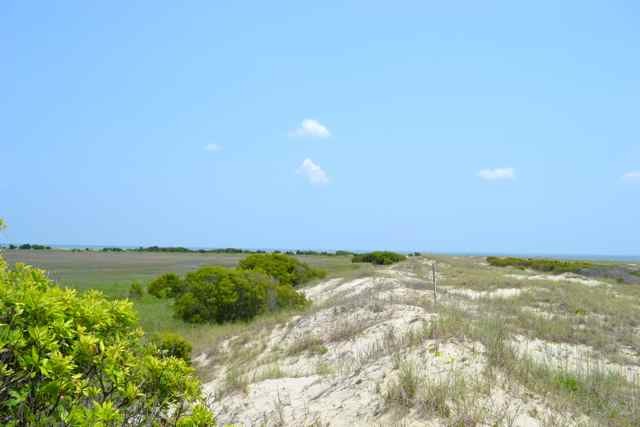
Before I entered the maritime forest I also pulled on a long-sleeved shirt, and tugged my hat down around my ears, anticipating biting flies. I was not mistaken, and the narrow path through the forest presented a gauntlet of voracious flies.
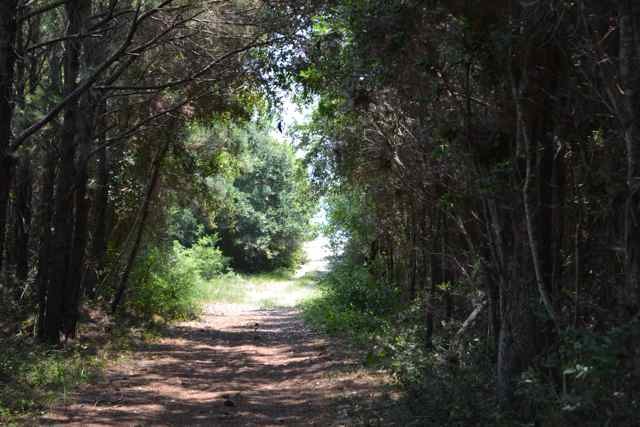
I had experienced these flies about ten days ago on the tour at the Yawkey Wildlife Center, but this crop rivaled that population. Three different fly species from the family Tabanidae were present: deer, yellow, and horse (greenhead or salt marsh horse fly). These flies particularly liked to land on my glasses, sometimes on the inside of the lenses.
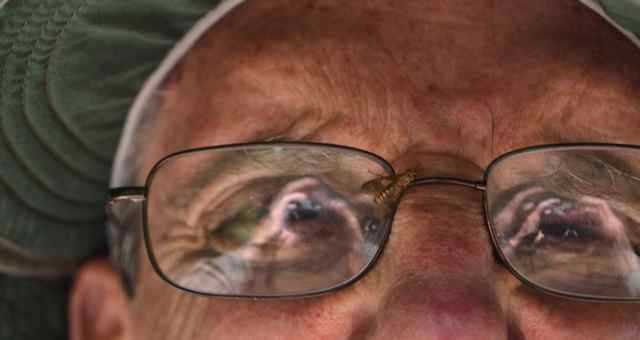
I found some relief when I arrived at the open Jacks Creek dike on the Old Fort Road, but would continue to find these troublesome flies on all the forest roads (and the greenheads out on the water.) WIthout long sleeves and hat I would not have walked the island’s interior. (Reflect on this couplet by Ogden Nash:
“God in His wisdom made the fly
And then forgot to tell us why.”)
Several birds displayed their displeasure with my walk on the dike: black necked stilts, and willets, with the latter being particularly vocal and aggressive.
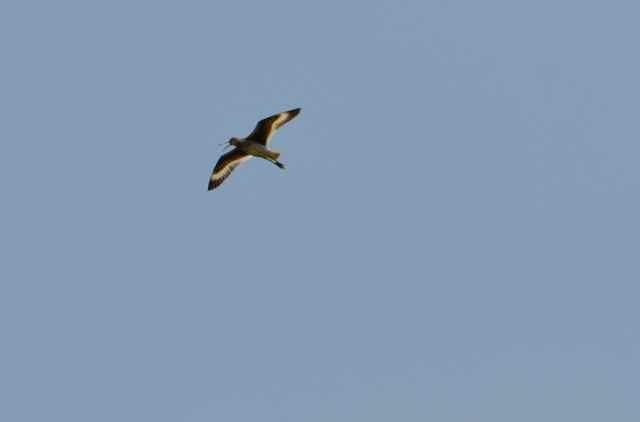
Back into the forest and flies, I soon came to the Old Fort and the view out to Jacks Creek.
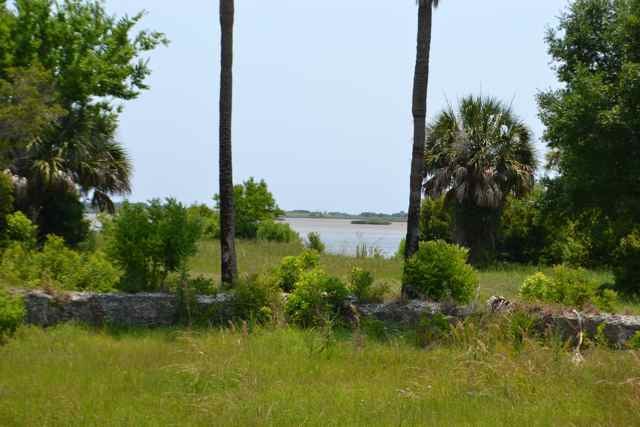
Beyond was located the impoundment’s inlet and water control structure by the marsh. The inlet’s narrow waters have typically been a gathering place for alligators, and besides those in the water there was a shady den where several gators lay under eroded palmetto rootballs.
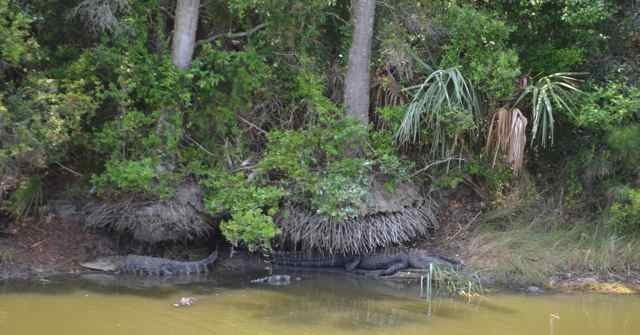
Besides more flies on the walk, the Old Fort Road and Alligator Alley contained the markings of alligator tail drags, both running along the road and across. These signs of alligator movements dominated the sandy roads, and I knew I would not be sharing the roads with any alligators due to the heat – in the nineties (99 degrees in Charleston). However when I came out of the woods toward Pool #2 I encountered about a four foot alligator preparing to cross from the Jacks Creek side – it appeared with open jaws and as if caught naked.
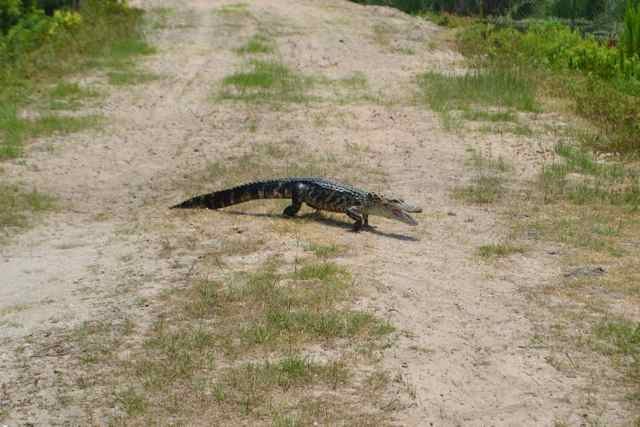
Reaching the middle of the road, its reptilian brain hit flight or fight, thankfully the former, and it sprinted in a burst to the safety of the pool. In a final spasm it took off with a crash through the tall aquatic vegetation. Prior to this in Pool #1 I startled a group of ducklings, who swam off through the duck weed to safety, while a parent flew off away from her young and played injured, attracting the attention of a young alligator.
Despite having carried two water bottles with me, the stifling heat had reduced my water supply to ounces, and I anticipated an ocean cool-down at the Boneyard.
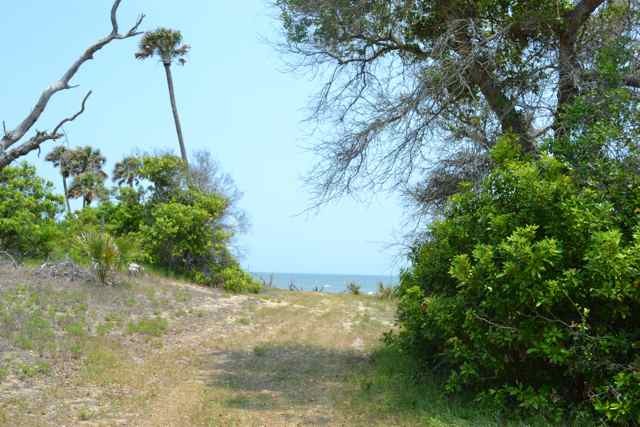
Leaving the flies, and feeling more fully the solid southwest breeze, I pulled off the sweaty layers and indulged myself in the healing waters. Feeling refreshed, I began the last leg of my circuit walk, now with most of my clothes in my pack.
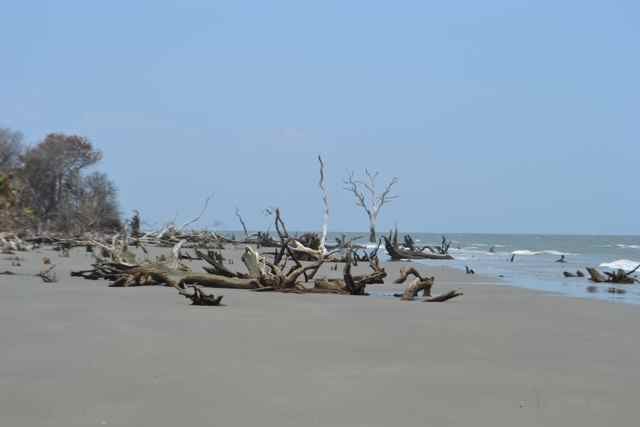
Prior to the first shallow tidal creek cutting across the beach, a good sized contingent of seabirds, mainly royal terns, was ahead on the beach, a place I had earlier dubbed “The Waiting Beach”. I was able to get within twenty yards before they became airborne.
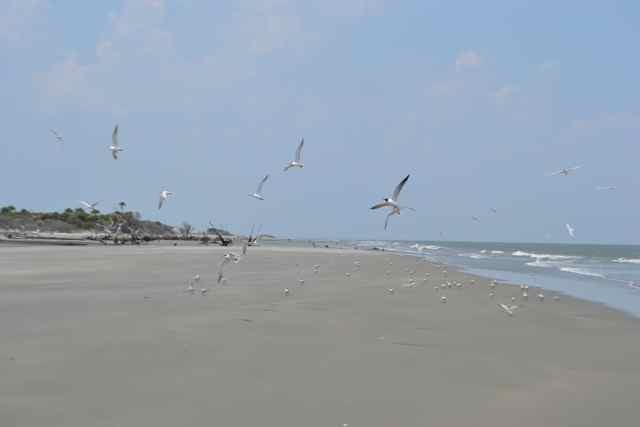
This tidal creek had changed its course a while ago, and today I found a log where I could cross a narrow section without getting my feet wet. The last tidal creek was also drastically changed, and did not cut a channel across the beach.
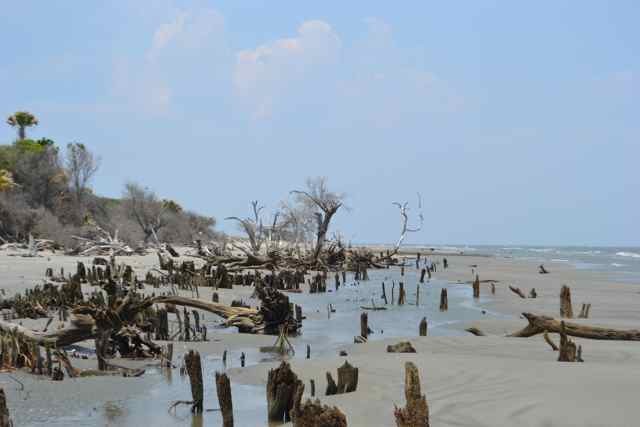
Somewhere in between the two creeks a shallow long pool created from multiple tree stumps presented a new feature, and I came upon a “beautiful swimmer” walking toward deeper water.
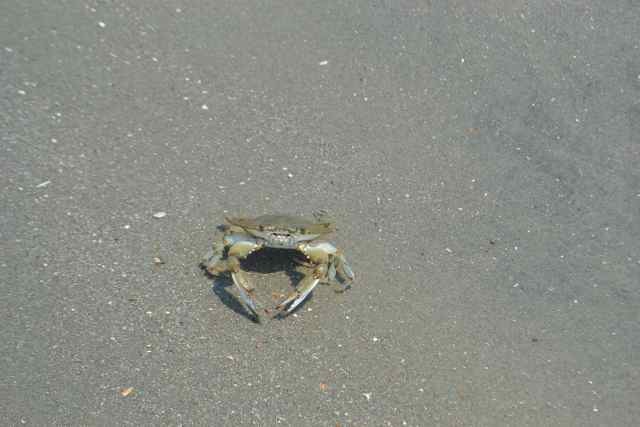
Along the way, two ruddy turnstones ambled along the strand.
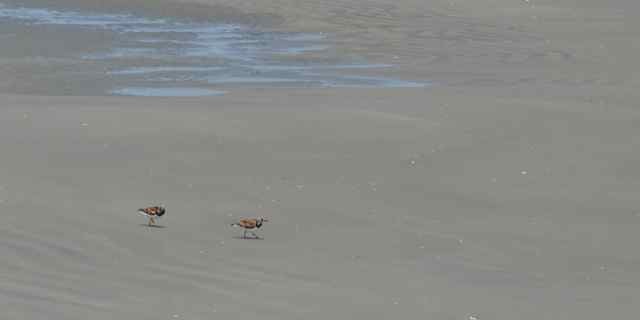
The remnants of marsh were traps for shells, several filled with clams.
My walk had taken longer than anticipated, and I made haste to prepare Kingfisher for sailing. I would be going against the outgoing tide, and with low tide about 5 I would need to pull Kingfisher out before the landing was all mud. In my favor was the southwest wind at the advertised 15-20 knots. I would not be sailing free, nor standing up in the cockpit, but close hauled on the port tack and hiked out to keep the hull flat. My vision became obstructed by the spray on my glasses, and I would only have seen a loggerhead if one had surfaced directly in front of our course. But despite the adverse tide, progress was good, and halfway across the Bay I was able to ease to a close reach. We gradually came up on a plane, and shot into the mouth of Andersonville Creek at a good clip.
I passed the exposed oyster rock I had ingloriously crunched with the daggerboard earlier at high tide, and passed to port of the now exposed mud flat and shell rake next to the opening to the Waterway. A dozen black skimmers stood here, all pointing their impressive mandibles to the southwest. We made it in with little water to spare. It was necessary to dig the paddle deep into the mud to paddle/slide Kingfisher through the barely submerged mud to the trailer, for hauling out and towing up the angled ramp.